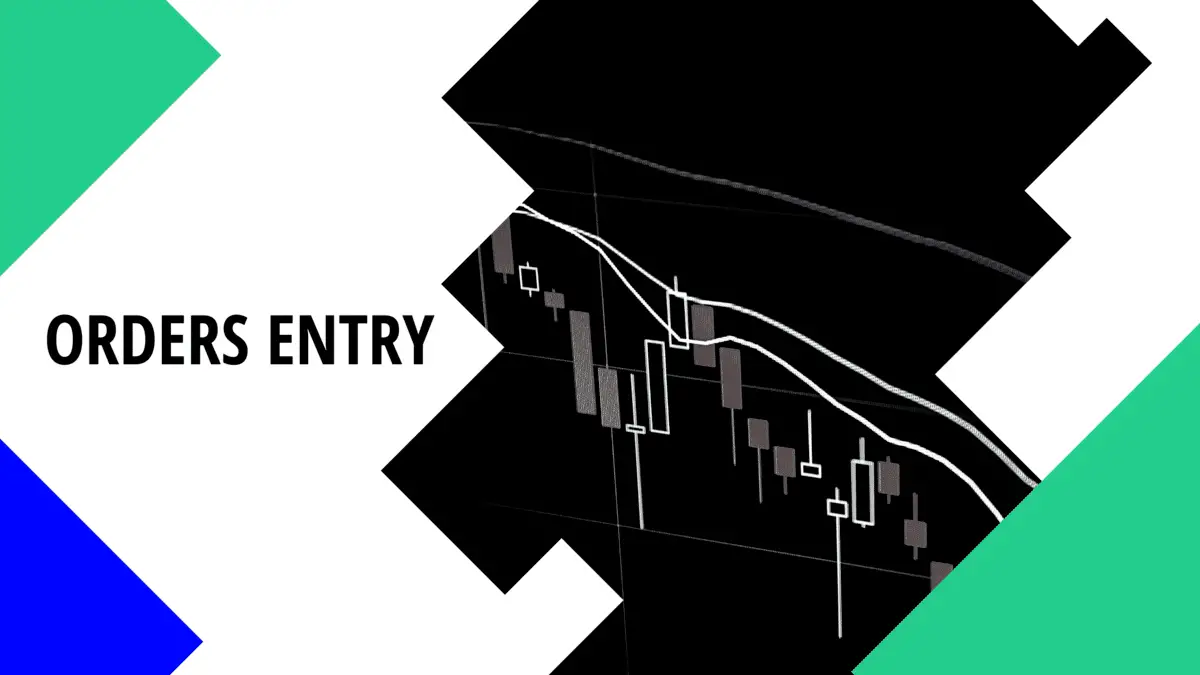Orders entry is the order to enter a trade at a specific price level. There are different types of order entry as well strategies to do in the best way. Moreover, it is important for traders to fully understand entry orders for better trading. That said, the purpose of today’s post is to help you understand order entry definition, process, and strategies. So, let’s start right away.
Orders entry definition
Orders entry is the instruction to a broker or brokerage firm to enter a trade at a specific price level. If the price of that particular financial instrument doesn’t reach that level, the entry order isn’t triggered.
Types of orders entry
There are the following three types of order entry.
1. Market order
A market order is a type of order entry that enables traders to buy or sell a particular instrument at the best current market price. For example, if the current market price of a stock is $5.5 and you place a market order, you will buy those stocks at the market price i.e. $5.5.
2. Limit order
A limit order is a type of order entry that enables traders to buy an instrument at a price below the market price or to sell an instrument at a price above the current market price. Limit orders are extremely useful when you predict that the price of an instrument will reverse after hitting a certain price level. Thus, you can use this order’s entry type to enter a trade at the best possible price.
Let’s try to understand it through examples. Let’s say the current market price of a stock is $10 per share. However, you are anticipating that the price will drop to $9 and that will be the turning point of the trend. In this case, you can place a limit order to buy any number of shares when the price hits $9. However, the order will not be executed if the price doesn’t reach $9.
On the flip side, the current market price of a stock is $10 per share. However, you are anticipating that the price will rise to $15 and that will be the turning point of the trend. In this case, you can place a limit order to sell any number of shares when the price reaches $15. However, the order will not be triggered if the price doesn’t reach $15.
3. Stop order
A stop order is a type to buy a financial instrument above the current market price or sell below the current market price if the order price gets hit. This order type is useful when traders think that price action will continue upon reaching that specific price level.
Let’s try to understand stop order using an example. For example, the current price of a particular stock is $10. Now you anticipate that if the price of that stock reaches $11.5, the uptrend will continue. So, you will place a stop order to buy a specific number of shares if the price continues to increase and reaches the $11.5 level.
On the other hand, suppose that the current price of a particular stock is $10. Now you anticipate that if the price of that stock reaches $8.5, the downtrend will continue. So, you will place a stop order to sell a specific number of shares if the price continues to fall and reaches the $8.5 level.
Orders entry strategies
Trading requires traders to think about getting in and out of a trade at a profit or loss. This is where order entry helps traders. They can use different order types to get in, control risks, and make a profit. It is important because traders not only need to manage risks but also determine a realistic profit target.
Again, let’s try to understand it through examples. Assume you want to buy a particular stock at $10.5 and place a limit buy order. Your order gets hit and you buy a specific number of shares at that price. Moreover, you don’t want to risk more than 5% according to your trading strategy. Therefore, you will place a sell order of 5% below $10.5. That means, if the price doesn’t go in the expected direction, this order will limit your losses.
Secondly, setting a realistic profit target is also part of the game. So, your analysis says that you can expect a 15% profit on the stocks you bought. Therefore, you will place a sell order when the price reaches $10.5 + 15%.
The wrap-up
Orders entry is the instruction to a broker or brokerage firm to enter a trade at a specific price level. Market order, limit order and stop order are three major types of order entry. These order entry types serve different purposes to help traders manage risks and take profits. Moreover, they are also crucial in anyone’s overall trading because you can’t execute your strategies without them. As a simple rule, you cannot trade successfully if you don’t know how to enter and exit a trade. That said, orders entry are a simple but very useful tool for successful trading.

 Good Trading requires the Best Charting Tool!
Good Trading requires the Best Charting Tool!

 We loved Marwood Research’s course “Candlestick Analysis For Professional Traders“. Do you want to follow a great video course and deep dive into 26 candlestick patterns (and compare their success rates)? Then make sure to check this course!
We loved Marwood Research’s course “Candlestick Analysis For Professional Traders“. Do you want to follow a great video course and deep dive into 26 candlestick patterns (and compare their success rates)? Then make sure to check this course!